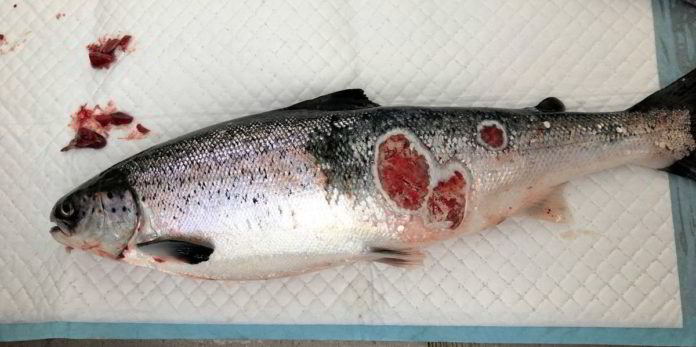What are the deadliest infectious diseases in Norwegian farmed salmon?
Infectious diseases have been found to be responsible for the death of approximately 38% of all farmed salmon killed before harvest in Norway, according to a new report from the Norwegian Veterinary Institute.
These findings highlight the ongoing battle against infectious diseases in aquaculture, underscoring the need for continued research and development of effective treatment and prevention strategies.
Extent of mortality crisis revealed: More than 100 million salmon died in Norway in 2023
Here are the top five:
- Winter Sores: In salmon, winter sores are skin lesions that typically occur during colder months. Caused by the bacterium Moritella viscosa, these sores can lead to significant skin damage, making the salmon susceptible to secondary infections and affecting their overall health.
- Cardiomyopathy Syndrome (CMS): CMS is a viral disease specific to Atlantic salmon. It targets the heart and skeletal muscle, leading to heart lesions and reduced cardiac function. This often results in reduced growth and increased mortality, especially in larger, near-market size fish.
- Gill Disease: This term encompasses several conditions that affect the gills of salmon, often caused by various pathogens including bacteria, viruses, and parasites. Symptoms include gill inflammation and damage, which can severely impact respiration and osmoregulation, leading to poor health and, in severe cases, death.
- Heart and Skeletal Muscle Inflammation (HSMB): HSMB is a viral disease that, as the name suggests, affects the heart and skeletal muscles of salmon. The condition can cause severe inflammation leading to reduced cardiac function and muscle damage. HSMB is particularly concerning because it can result in sudden and high mortality rates in affected populations.
- Pasteurellosis: In salmon, pasteurellosis is caused by the bacteria Photobacterium damselae. It’s a systemic infection that can lead to widespread organ damage. Common symptoms include hemorrhaging, ulcers, and inflammation. This disease can spread rapidly in aquaculture settings, leading to high mortality rates if not promptly managed.









